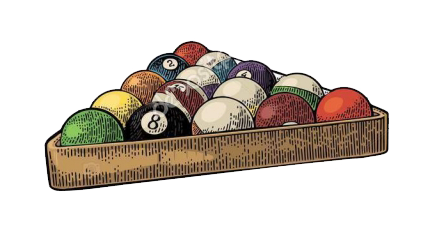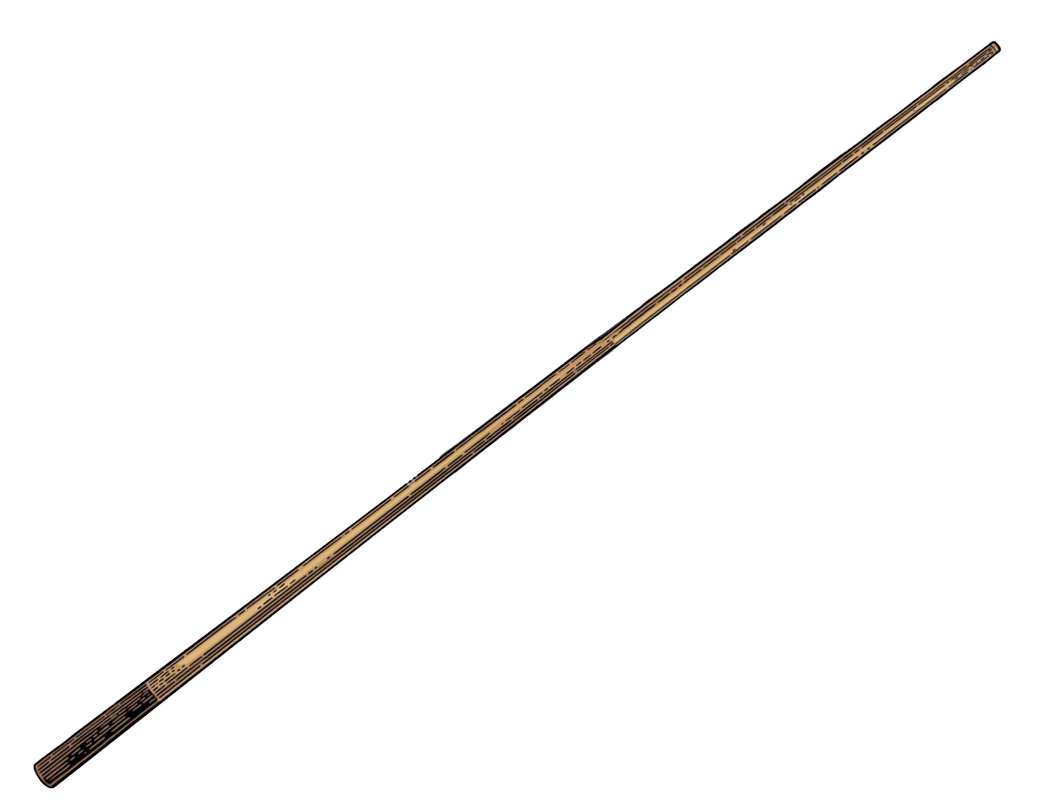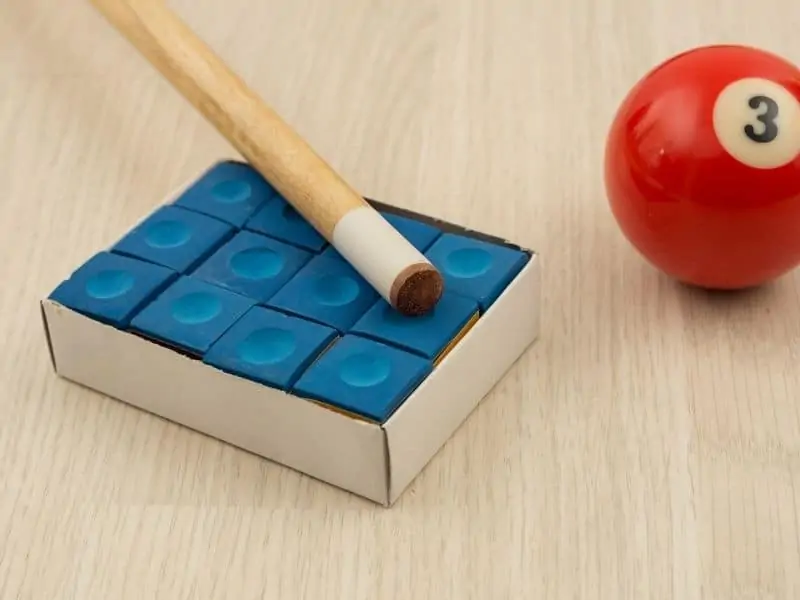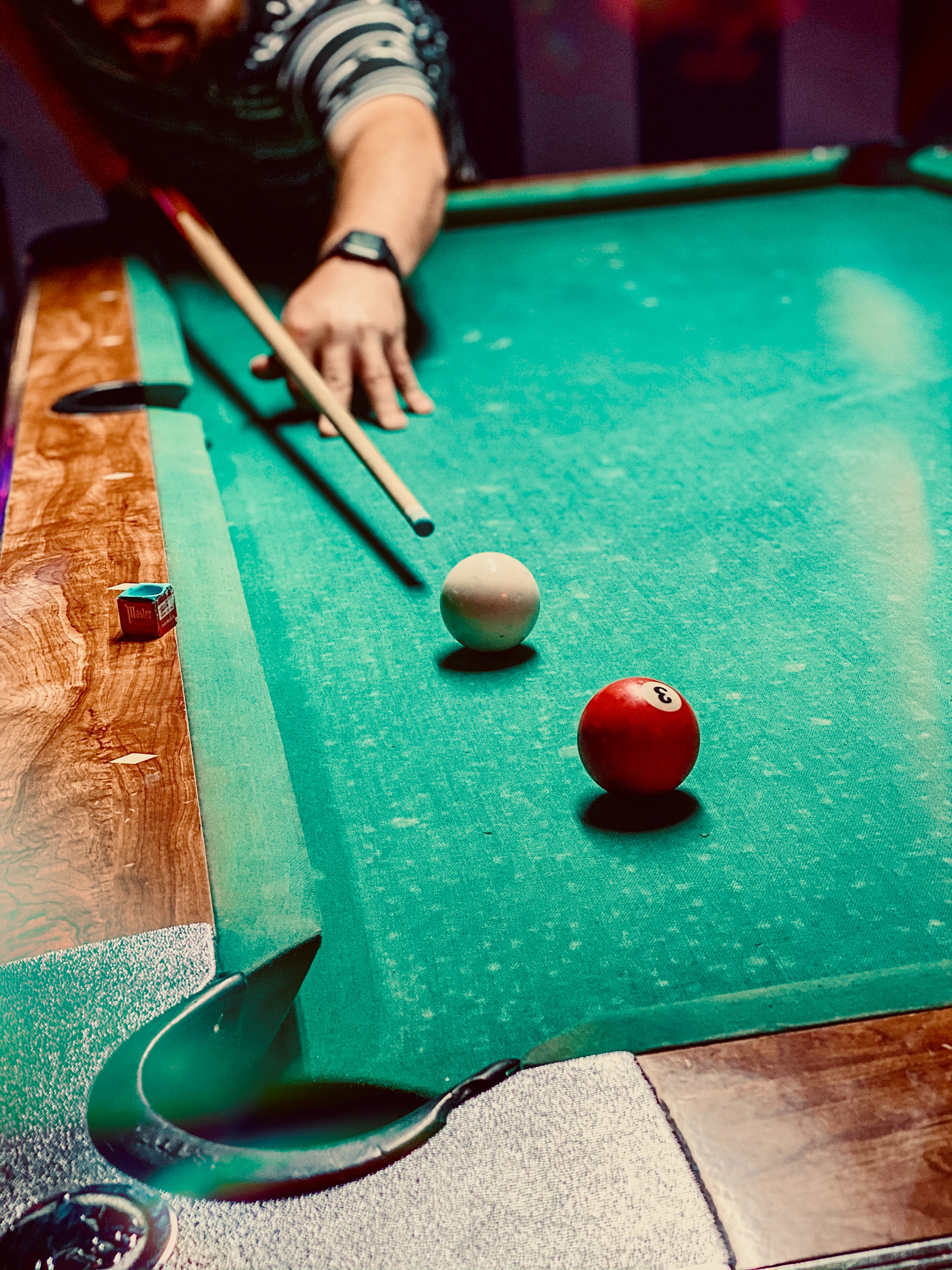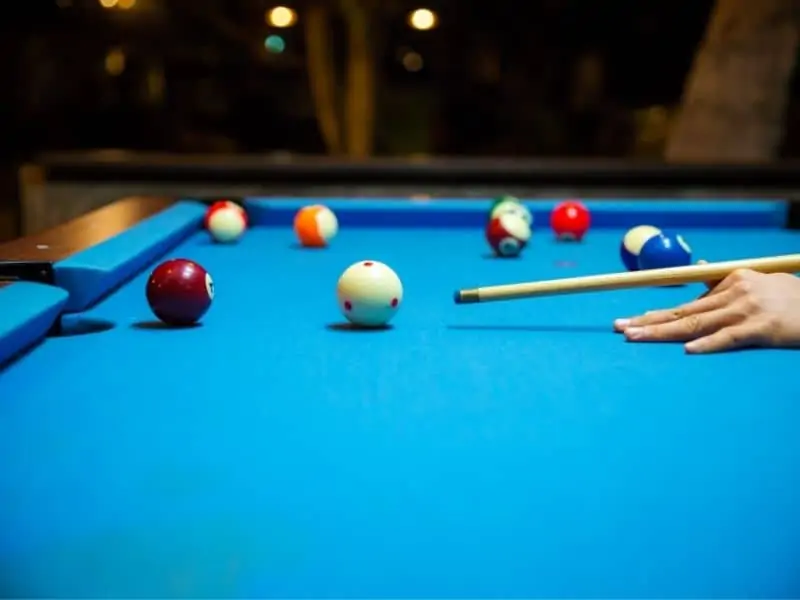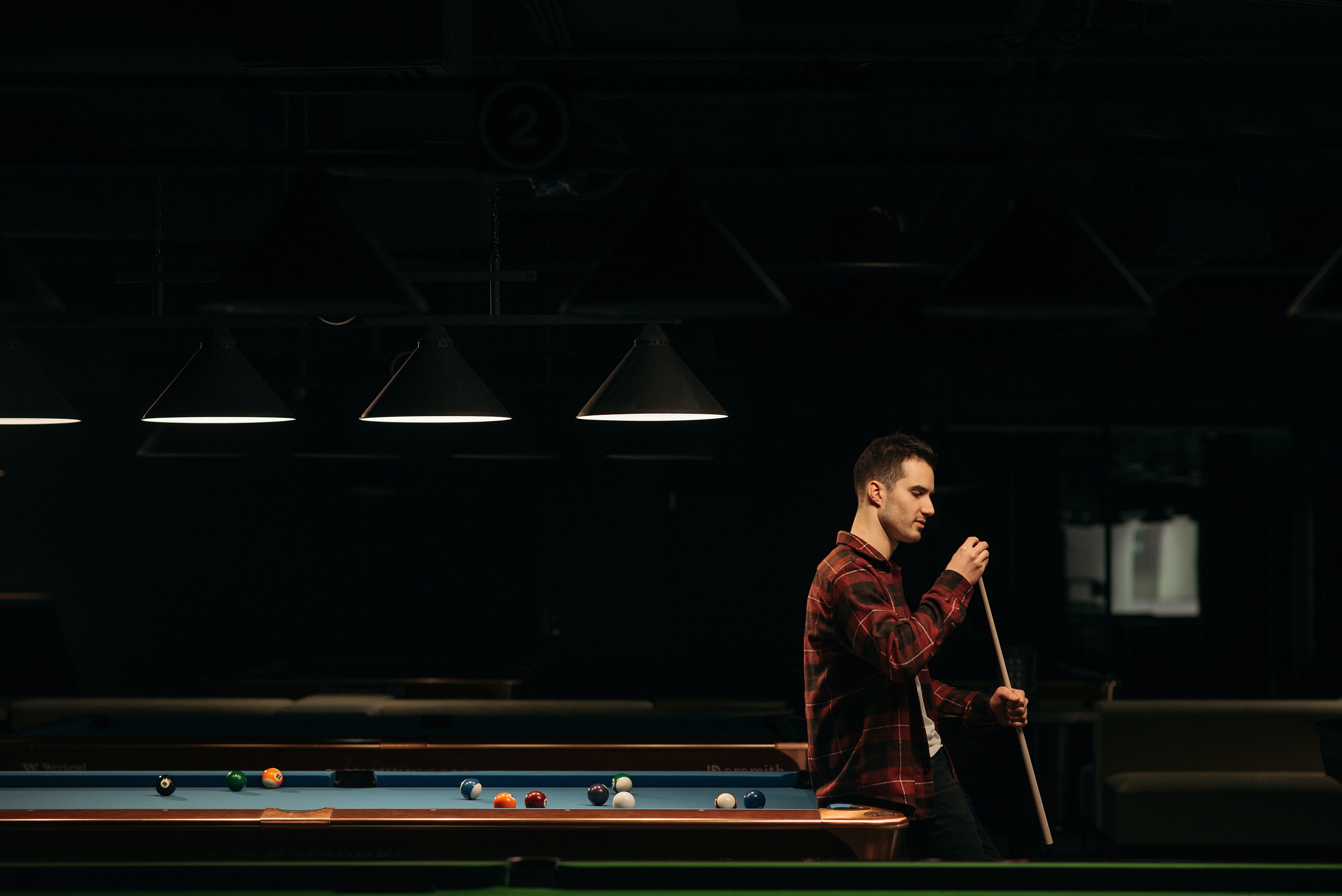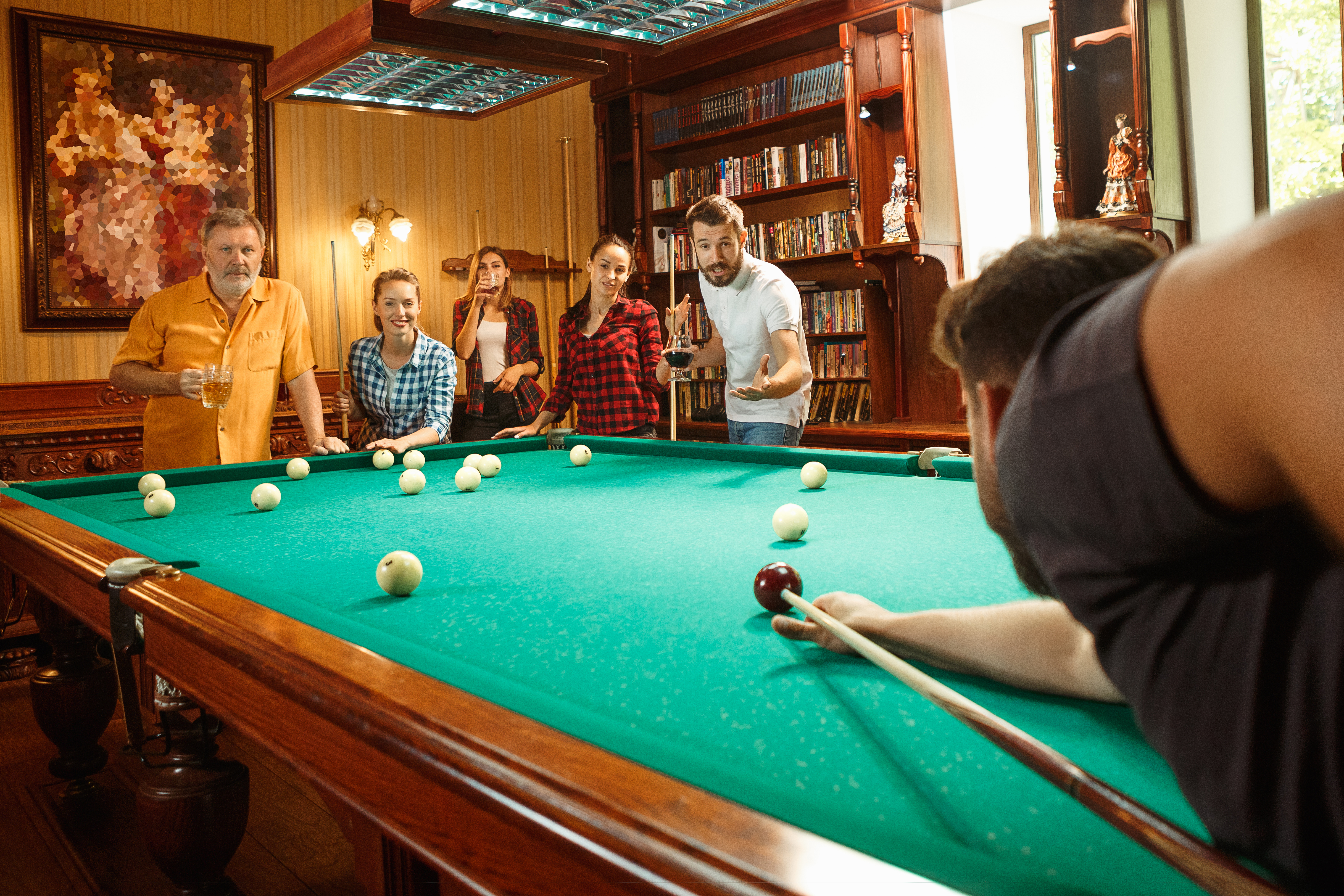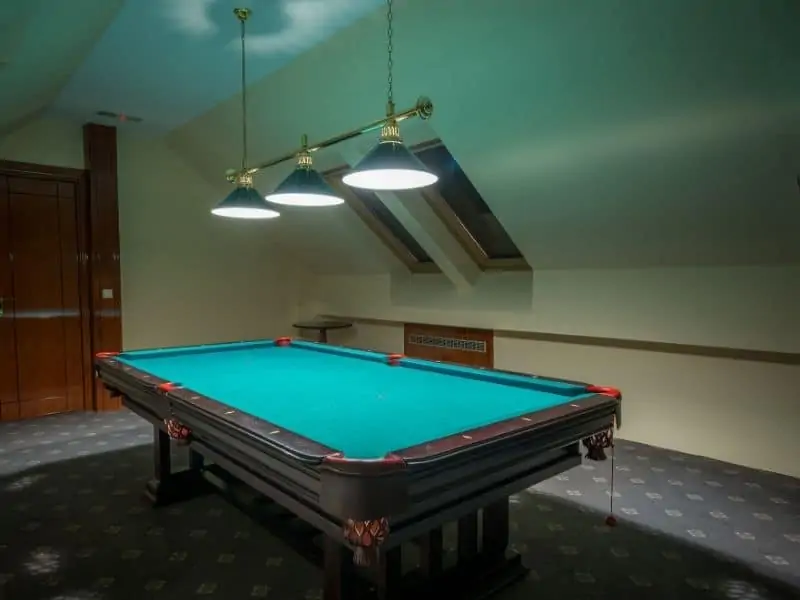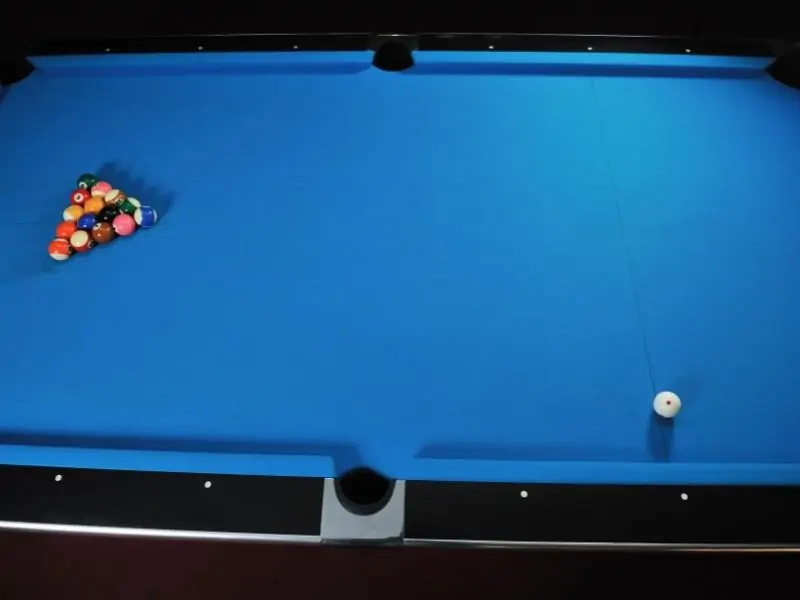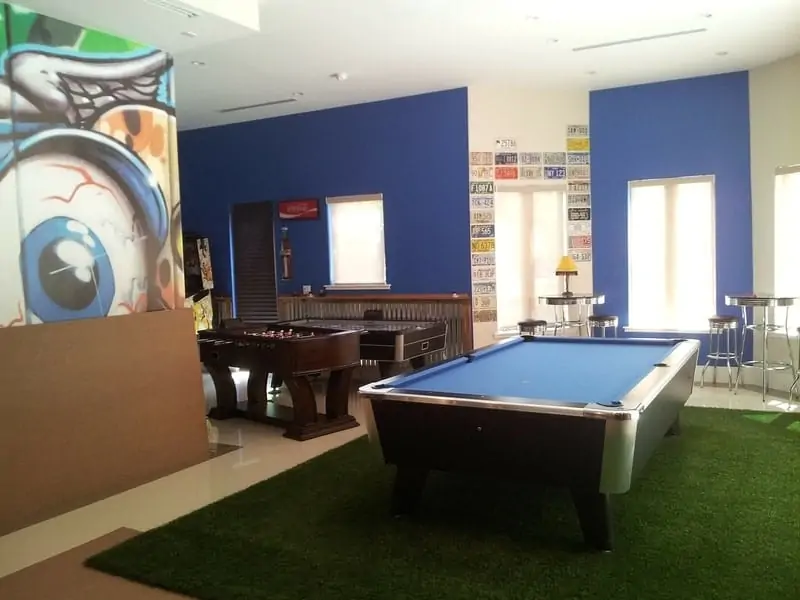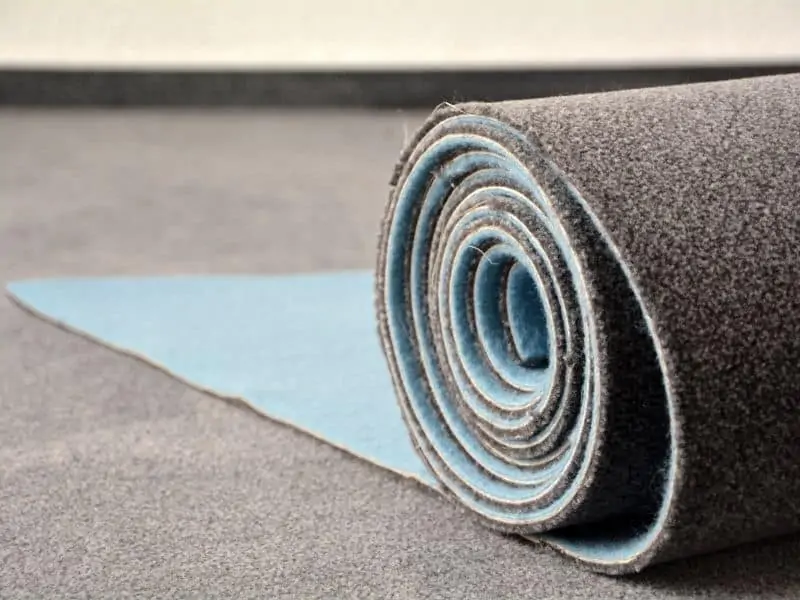Pool chalk is an often overlooked part of the game. Once you’ve played pool enough, chalking the cue tip turns from a conscious action to an unconscious one. But, the curious among us may wonder what’s in it. Read on to find the answer to the question: What is pool chalk made of?
Pool chalk is made of crushed silica, corundum, and dye. Sometimes, instead of corundum, another form of aluminum oxide, known as aloxite, is used. These ingredients come together to make the “chalk” used in billiard halls around the world. But, despite the limited ingredients, not all chalk is created equal.
Pool Chalk Isn’t Technically Chalk
Although the small colored cubes found with pool tables around the world are referred to as “chalk” this is not strictly true. Chalk is a naturally-occurring substance made of calcium carbonate, which is produced in many different ways.
Calcium carbonate limestone deposits are formed by dying plankton, which hold calcium in their bodies while living but release that calcium after they die. The substance then settles on ocean floors.
This has been happening ever since plankton came into existence several hundred million years ago. As much of the land we live on today used to be ocean floor, it’s no surprise that chalk is so readily available.
True chalk doesn’t work well on pool cues because it’s too dusty and can stain billiard cloth even more than today’s chalk does.
Silica and Aluminum Oxide
Both of the major components of pool chalk are formed in similar ways. Silica, found commonly as quartz, is an abundant mineral found in concrete, sand, and granite, among other materials. When inhaled in large doses, silica can be a health hazard. The amount that you’re exposed to while playing pool is no cause for concern.
Aluminum oxide is a chemical compound that’s found most often in a crystalline form known as corundum. Aluminum oxide is used in many different products, like aluminum foil, glass, paint, composite fiber, and electrical insulation.
These two compounds are crushed and combined with dye to turn the chalk into one of many colors available today. It’s then re-formed with glue to make the cubes we’re so familiar with today.
Pool Chalk is Different From Hand Chalk

It’s worth noting here that the chalk you use on your cue tip is not the same “chalk” that’s used by some players on their bridge hands. Often known as hand chalk, the white cone you see at some bars or pool halls is actually compressed talcum powder. Using it on the bridge hand reduces friction between the skin and the cue shaft, which can make for a smoother, more even stroke.
However, since the white hand chalk is messy and not always practical, many players prefer to use a pool glove on their bridge hand for the same effect.
Why Chalk is Important
Pool chalk is important for a few reasons. Whereas hand chalk reduces friction between the hand and the cue shaft, cue chalk increases friction between the cue tip and the cue ball.
Since both the cue ball and the cue tip are rounded, there’s not a lot of surface area available when the two meet. This is where chalk comes in. It provides just enough friction to deliver the force of the shot and send the ball where you want it to go.
Chalk is especially important for shots with spin or “English” because, without it, your chances of a miscue skyrocket. Hitting the cue ball off-center and without chalk results in two smooth surfaces coming into contact with each other. With no friction there, the cue ball is likely to jump or “squirt” instead of spin as it moves.
If you’ve ever miscued on a shot, you know exactly how this feels. And the reality is that you can miscue even with adequate chalk. This is one reason why pool is a challenging sport. But without chalk, it would be even harder.
Applying the chalk also gives the player a chance to get his mind right and think about his shot. It’s almost a ritual for many players. They stand there, brushing the cue tip with the chalk, staring at the table, getting their mind into “the zone.”
How to Use Chalk Properly
Believe it or not, there’s a right and a wrong way to use pool chalk. And there’s some etiquette involved, too.
Applying Chalk
Chances are you’ve seen a cube of chalk with a hole drilled into it the size of a cue tip. This is the wrong way to use chalk. Spinning the chalk on the cue tip works okay when the chalk is brand new. But as the divot gets deeper and rounds out, this method is less than effective. The shape of the hole in the chalk prevents you from getting chalk on the entire cue tip.
So, here’s a few pointers on how to apply chalk.
- Apply the chalk with brushing motions as you spin the cue in your hand. If the chalk has a hole in it, find a piece of chalk that doesn’t and use that. Or, use the edges of the holey chalk to apply the substance evenly on the cue tip.
- Refrain from applying the chalk directly over the table, as this creates a mess and can affect play after a while.
- If you think you have too much chalk, avoid the temptation of blowing the chalk off. You’ll only get moisture from your mouth on the cue tip, which can cause the chalk to clump.
- Refrain from hitting the cue stick against anything to remove excess chalk. You’ll only damage the cue.
- Avoid chalking the cue after your shot. Wait for the other player to finish and chalk your cue before your shot, when it’s your turn at the table.
- Some chalks should not be applied before every shot, while others should. Inspect the cue tip after your shot to get a feel for the chalk you’re using.
The Science Behind Pool Chalk’s Grip
While understanding the components of pool chalk can be fascinating, delving into the science of its function can be equally enlightening. At the core of every successful pool shot lies the perfect union of skill and science. Here’s a peek into the grip dynamics of pool chalk.
Molecular Interaction
When we talk about friction at a microscopic level, we are essentially discussing the interactions between the molecules of two surfaces. The more the molecules of one surface can “interlock” with the molecules of another surface, the greater the friction. By applying chalk to a cue tip, players are increasing the micro-roughness of the tip. The roughness acts as tiny “grippers,” catching onto the cue ball’s surface more effectively.
Enhancing Contact Points
As mentioned earlier in the article, both the cue ball and the cue tip are rounded, leading to a minimal surface area contact. Chalk increases the number of effective contact points between the cue tip and the ball. More contact points mean more opportunities for force transfer, ensuring shots are precise and controlled.
Humidity and Chalk
An interesting factor that influences the chalk’s effectiveness is ambient humidity. Moisture in the air can make cue tips slightly tacky. Dry chalk will help absorb that moisture and maintain the cue tip’s friction properties. This is why, in areas with high humidity, regular chalking becomes even more crucial.
Evolution of Chalk Quality
Over the years, as pool has grown in popularity, manufacturers have sought to refine the properties of pool chalk. They aim for chalk that clings better to the cue tip, minimizes dust and residue on the table, and optimizes friction for the perfect shot. As a result, the market now offers a range of chalks that cater to different preferences, playing styles, and environmental conditions.
While chalk might seem like a trivial aspect of pool, understanding its function can significantly benefit your game. Just as a golfer selects their club or a tennis player chooses their racket, a billiards player should understand their chalk. And as with all tools, its effectiveness is maximized when used correctly. So the next time you apply chalk to your cue, remember the incredible science that’s backing your shot!
The Best Chalks on the Market
Now let’s take a look at the best chalks out there. The price range for chalk is a bit ridiculous, but I’ll give you options for quality chalk at every price point.
Best Affordable Chalk
You can get a 12 pack of Master Billiard Chalk here. It’s highly affordable, is one of the most trusted brands, and will last you a long time.
Best Mid-Range Chalk
Looking to step up from the cheaper chalks? Then this 5 pack of Predator Chalk is for you. This chalk boasts better accuracy, longer chalk life, and better control.
Best High-End Chalk
For the best-of-the-best, check out this Kamui chalk. This stuff is expensive, but many players swear by it. It’s the type you’ll want to keep in your pocket if you’re playing anywhere but your own house because it’s sure to be the envy of the pool hall.
Other Articles You May Be Interested In
- Why Do Pool Cues Need Chalk?
- Chalking a Pool Cue: Why Its Done & How To Do It Properly
- The Ultimate Guide To Choosing A Pool Cue Tip
- Best Pool Cues for the Money: A Cue for Every Budget
- Why Are Pool Cues Made of Maple?
